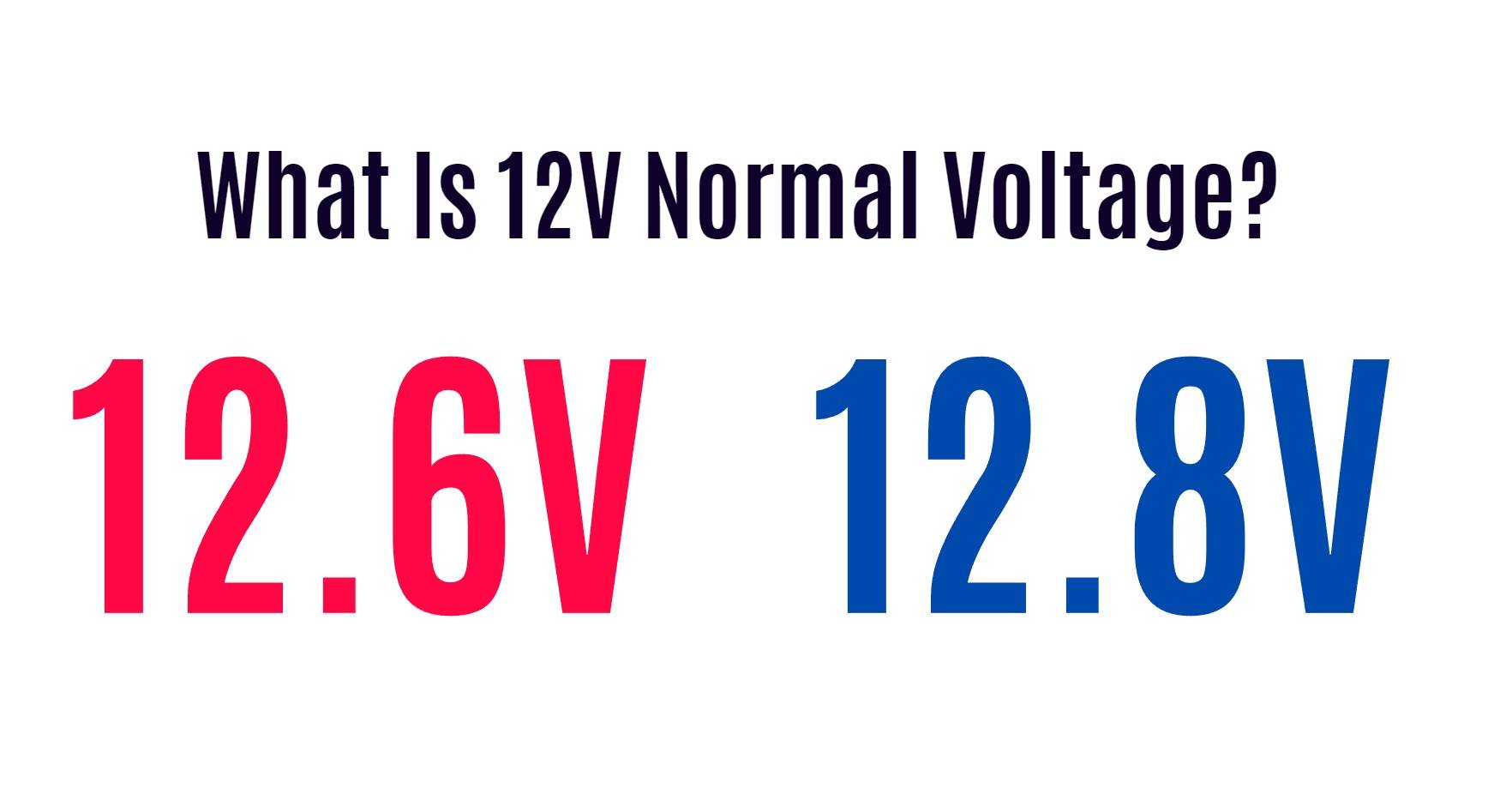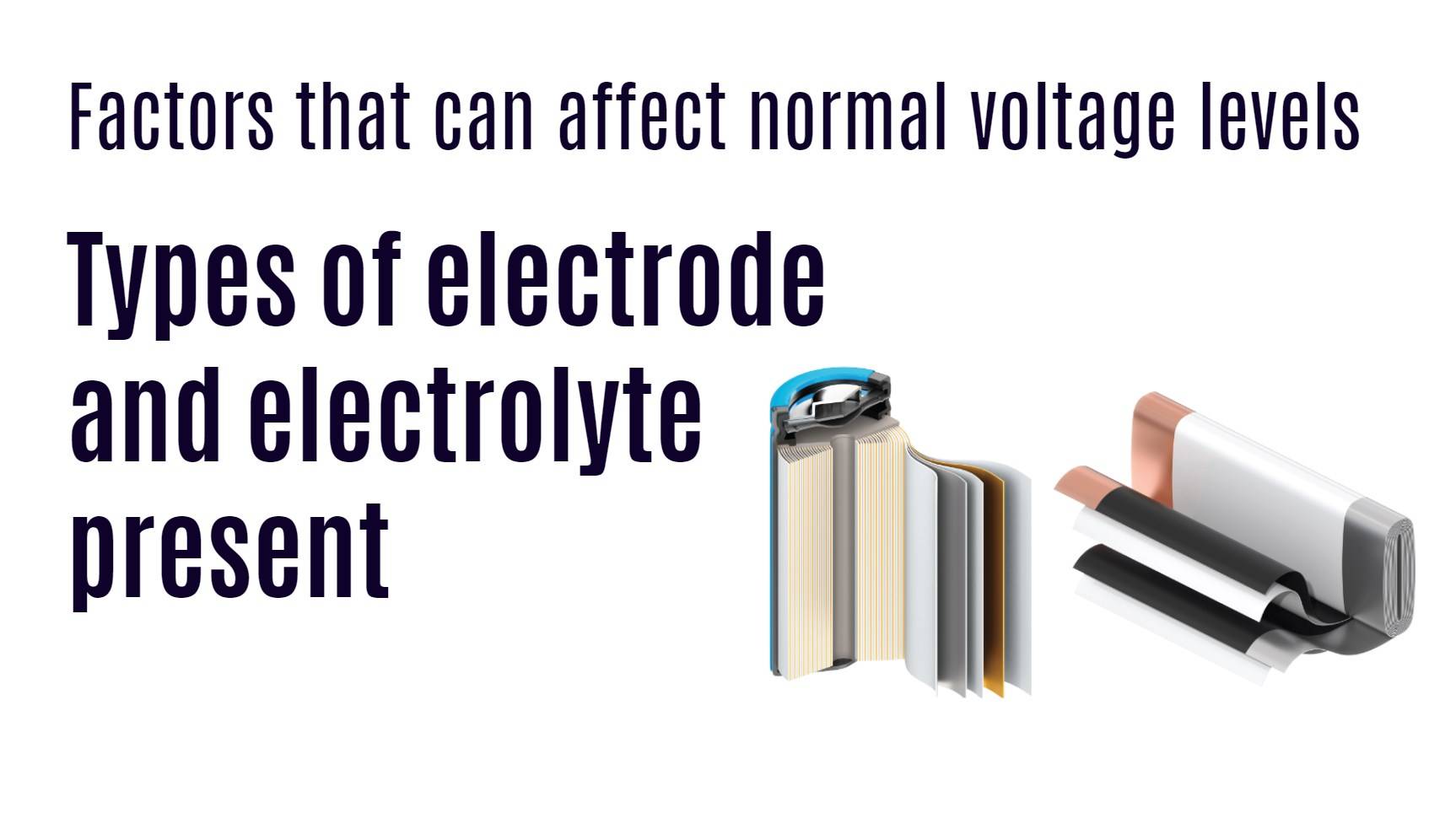What is 12v Normal Voltage? A fully charged 12-volt battery should read at 12.6 volts on a multimeter. This measurement indicates the normal voltage level for a 12V battery when it is fully charged. However, it is important to note that the voltage reading may vary slightly depending on the specific type of battery and its condition. For instance, a fully charged 12V lithium iron phosphate battery may read between 13.4 volts and 13.6 volts at rest. Always refer to the manufacturer’s specifications for accurate voltage information.
Factors that can affect normal voltage levels
Factors that can affect normal voltage levels include overloaded transformers, malfunctioning power factor correction devices, cyclical controls, and detuned reactors. These factors can lead to voltage imbalances and fluctuations in the power supply. Other factors, such as temperature changes, loose connections, and resistance in wires, can also impact voltage levels. To maintain stable and consistent voltage levels in electrical systems, it is important to address these factors and ensure proper functioning of the equipment.
When it comes to electrical systems, maintaining the proper voltage levels is crucial for the optimal functioning of devices and appliances. However, there are various factors that can impact normal voltage levels.
One factor that can affect voltage levels is the distance between the power source and the device or appliance. As electricity travels through a wire, resistance occurs, leading to a drop in voltage. The longer the distance, the higher the resistance and therefore a lower voltage level.
Another factor is electrical load. When multiple devices or appliances are connected to a circuit, they collectively draw current from it. This increased demand for current results in a drop in voltage, affecting all connected devices.
Additionally, fluctuations in power supply can also impact normal voltage levels. Power surges and sags occur due to sudden changes in electricity flow caused by external factors such as lightning strikes or faulty wiring.
Temperature can also play a role in affecting voltages. Extreme heat or cold can cause resistive elements within circuits to expand or contract respectively, altering their conductivity and consequently impacting voltage levels.
Poor quality wiring or loose connections can lead to high resistance which translates into reduced voltages reaching devices.
Understanding these factors that affect normal voltage levels allows us to take appropriate measures for ensuring smooth operation of our electrical systems
The standard 12V voltage in different systems
The standard voltage for 12V systems can vary depending on the application. In automotive systems, the typical voltage output from the alternator is around 14V when the engine is running. Most devices designed for automotive use can handle this voltage without any issues. However, it is important to note that the acceptable voltage range for 12V electronics may vary depending on the specific device and its requirements. Always refer to the manufacturer’s specifications for accurate voltage information.
The standard 12V voltage is widely used in various systems and industries. From automotive to marine, telecommunications to solar power, the 12V system has become a common standard for many applications.
In automotive systems, the 12V voltage powers various components such as headlights, interior lights, ignition systems, and audio equipment. It provides enough power for these devices to function efficiently without overwhelming or damaging them.
Similarly, in marine applications, the 12V system ensures that navigation instruments, communication devices, and lighting on boats operate smoothly while out at sea. The lower voltage reduces the risk of electrical hazards and helps maintain safety standards on board.
Telecommunications networks also rely on the stability of a 12V system to power essential equipment like routers and modems. This consistent voltage level allows for reliable internet connections and smooth data transmission within homes or offices.
Furthermore, renewable energy sources like solar panels often produce electricity at around 12 volts. By using a charge controller or an inverter with appropriate voltage conversion capabilities, this energy can be harnessed effectively for powering appliances or storing it in batteries.
Having a standardized 12V voltage across different systems ensures compatibility between devices and facilitates ease of use. Whether you’re driving your car or harnessing solar energy at home,it’s important to understand how this normal voltage operates and ensure its proper regulation for optimal performance.
Common devices and appliances that operate on 12V
Common devices and appliances that operate on 12V include electronics, entertainment systems, kitchen appliances, power tools, lighting, and medical devices. These devices are designed to be compatible with 12V power sources, making them suitable for use in vehicles, boats, and other 12V systems. It is important to check the specifications of each device before use to ensure compatibility. For example, you can power your laptop, charge your smartphones and tablets, operate a 12V TV or radio, use 12V kitchen appliances, and even run power tools using a 12V power source.
Common devices and appliances that operate on 12V are becoming increasingly popular in today’s technology-driven world. One such device is the car, which relies on a 12V electrical system to power various components such as the lights, radio, and ignition.
Another common appliance that operates on 12V is the laptop. Many laptops now come with a 12V adapter that allows them to be charged using an ordinary car charger or portable battery pack. This makes it extremely convenient for people who are constantly on the go and need to charge their laptops while traveling.
In addition to cars and laptops, there are many other devices that run on 12V. These include camping equipment such as fans, refrigerators, and air pumps. Many campers rely on these appliances to make their outdoor adventures more comfortable.
Furthermore, certain home security systems also utilize a 12V power source for operation. These systems often include surveillance cameras, motion sensors, and alarms that require a consistent voltage supply in order to function properly.
Understanding the range of devices and appliances that operate on 12V can help you better navigate through your everyday life. Whether you’re charging your laptop in your car or powering essential equipment during camping trips or securing your home with advanced security systems – knowing how these devices work can prove quite beneficial!
How to measure and regulate 12V voltage
To measure and regulate 12V voltage, you can use different methods. One method is to use a voltage divider, which involves using two resistors to scale down the voltage and measure it with an analog input pin. Another option is to use a switching voltage regulator, which can convert higher voltages to a regulated 12V output. Additionally, adjusting the duty cycle of a full-voltage signal can help control the voltage supplied to a 12V DC motor. It is important to choose the appropriate method based on the specific requirements of your system. Always ensure proper safety precautions and consult relevant documentation or experts for accurate measurements and regulations.
Measuring and regulating the voltage in your electrical systems is crucial for ensuring optimal performance and preventing potential damage. When it comes to measuring 12V voltage, you can use a multimeter – a handy tool that allows you to accurately measure different electrical parameters.
To get started, set your multimeter to the DC (direct current) voltage setting. Connect the black probe of the multimeter to the negative terminal of the power source or circuit, and then connect the red probe to the positive terminal.
Once you have made these connections, turn on your power source or device. The multimeter will display the measurement in volts on its screen. Make sure that this reading matches or is close to 12V for proper operation.
If you find that your measured voltage is significantly higher or lower than 12V, it may be necessary to regulate it. This can be done using a voltage regulator – an electronic component designed specifically for controlling voltages within a specific range.
By connecting a suitable voltage regulator between your power source and device/appliance operating at 12V, you can ensure stable and consistent output regardless of input fluctuations.
Remember, maintaining proper voltage levels not only prolongs equipment lifespan but also improves overall efficiency. So don’t overlook this important aspect when dealing with your electrical systems!
Importance of maintaining proper voltage levels
Maintaining proper voltage levels is crucial for the efficient and reliable operation of electrical devices and equipment. Fluctuations in voltage can cause damage or malfunctioning of sensitive electronics. By eliminating unnecessary voltage fluctuations, energy wastage can be reduced, resulting in lower energy costs. Proper voltage regulation also ensures the safety of electrical systems and protects equipment and appliances. By maintaining stable voltage levels, you can promote energy efficiency, reduce maintenance needs, and improve the overall performance of your electrical system.
One of the main reasons why maintaining correct voltage levels is important is to prevent damage to sensitive electronic components. Many devices and appliances are designed to operate on 12V, and any deviation from this can result in malfunctions or even permanent damage. For example, if you connect a device that requires 12V to a power source with higher voltage, it can cause overheating and ultimately lead to device failure.
In addition to preventing damage, maintaining proper voltage levels also ensures efficient operation. Devices that operate on 12V are designed with specific tolerances in mind. When the voltage fluctuates too much or goes below the recommended level (such as during low battery conditions), these devices may not function optimally or may not work at all.
Another aspect of maintaining proper voltage levels is safety. Electrical systems with unstable voltages pose risks such as short circuits and electrical fires. By regulating the voltage at a steady 12V, you reduce these risks significantly.
To maintain proper voltage levels in your electrical system, there are several steps you can take:
1. Regularly check your batteries: Batteries play a crucial role in supplying power to many devices operating on 12V. Make sure they are fully charged and functioning properly.
2. Use quality wiring: Poor-quality wiring can lead to resistance issues which affect the overall stability of the system’s voltage output.
3. Install regulators: Voltage regulators help stabilize fluctuations by ensuring a consistent output regardless of variations in input voltages.
4.
Utilize surge protectors: Surge protectors safeguard against sudden spikes or surges in electricity that could potentially damage devices operating on lower voltages like 12V
By following these simple guidelines for maintaining proper voltage levels, you can ensure optimal performance and longevity of your devices and appliances operating on


